- 1. What is decorative stone?
- 2. Features of application
- 3. Decorative stone in the living room interior
- 4. Decorative stone in the kitchen interior
- 5. Decorative stone in the bedroom interior
- 6. Decorative stone in the interior of a children’s room
- 7. Decorative stone in the interior of the hallway and corridor
- 8. Decorative Stone in the Interior of a Balcony
- 9. Decorative Stone in the Interior of a Bathroom
- 10. Photo Gallery – More Ideas
Stone, as the strongest and most reliable material, has served in construction since the first humans appeared on Earth. Builders used it for the Egyptian pyramids, the Great Wall of China, the Mayan civilization’s megalithic structures, ancient temples, and medieval fortresses.
Only wealthy homeowners could afford stone houses a hundred years ago, while others settled for clay and wooden huts. Even today, despite the huge variety of building materials available, the use of natural sandstone, granite, and marble in interiors is a sign of elitism.
However, imitations of natural stone look just as good, are more affordable, easier to process, and sometimes have better resistance to changes in humidity, temperature, and mechanical stress. This article will provide more information on this type of finish and its applications.
What is decorative stone?
Artificial stone looks like natural stone, but people or industrial methods create it, rather than extracting it from the earth. These methods involve pouring a mixture into a mold, drying it, sometimes applying heat treatment, and coating it with various impregnations or glazes.
The product’s composition can consist of concrete, ceramics, gypsum, acrylic, polyester, or even liquid stone in the form of an unset mixture, and flexible stone veneer in rolls or sheets, depending on the raw material.
For outdoor work, people use frost-resistant plates with minimal porosity and a rougher appearance. For interiors, they use lighter and thinner elements.
Cement, sand, gypsum, and clay are comparable to natural stone, allowing air and moisture to pass through freely, while acrylic resins are safe only at low temperatures – they should not be placed near a fireplace, oven, or other heating devices.
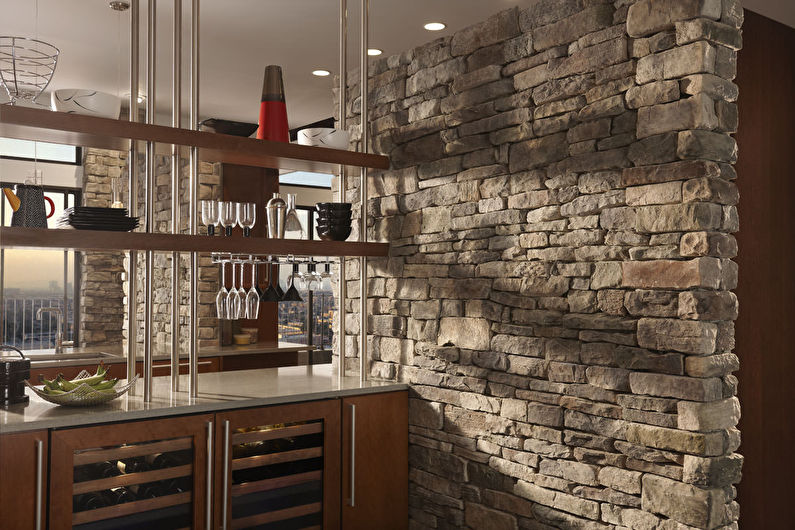

Features of application
You can find decorative stone in various forms just about anywhere: it adorns houses, apartments, offices, cafes, train stations, and administrative buildings. In dry rooms, relief artificial sandstone, shell rock, cobblestone, and slate prevail. Meanwhile, people tend to use smooth granite, marble, and glazed brick tiles in damp and crowded spaces.
In the first case, stone gives the interior a cozy and warm look, and in the second, it reminds us of the seashore with its rounded pebbles and polished boulders. From a practical point of view, this also makes sense, as glossy surfaces are much easier to clean, while the matte roughness under the influence of water and steam becomes unsightly.
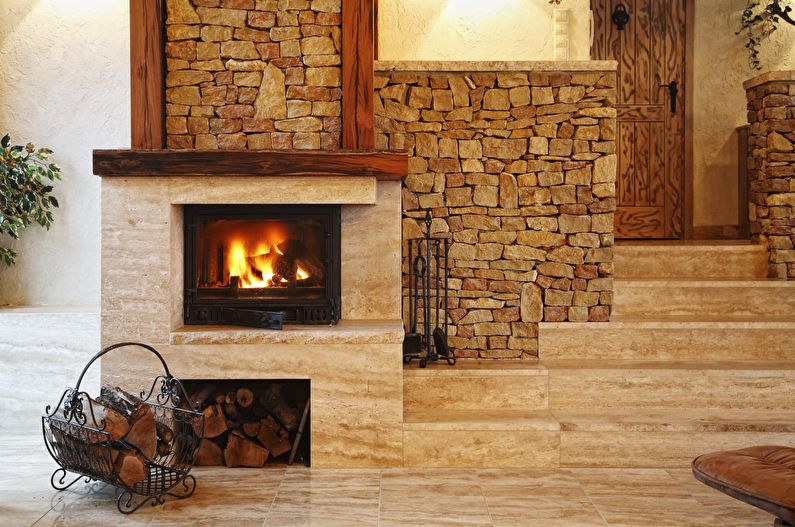
Decorative stone in the living room interior
People often link it subconsciously to the secure walls of a fortress that guard against enemies, or the steady warmth of a home hearth.
Facing an active fireplace, no other material matches stone in conveying the flame’s heat to the surrounding space. In apartments without the luxury of such a romantic heat source, people frequently install electric alternatives or simple candle-filled niches. Stone serves well to cover both the portal and the wall – completely or partially.
At times, people use stone merely to highlight interior accents, such as corner frames, arches, protrusions, and columns.
Imitation of sandstone slices and unprocessed granite is perfect for decorating a country or chalet-style living room. Gypsum and light marble will help recreate a classic atmosphere, while brick tiles are the most suitable for a loft or minimalistic style.
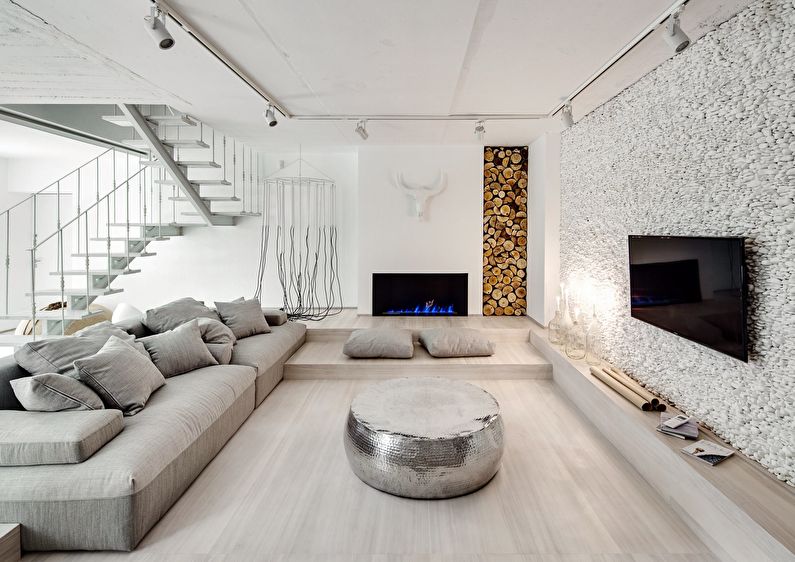
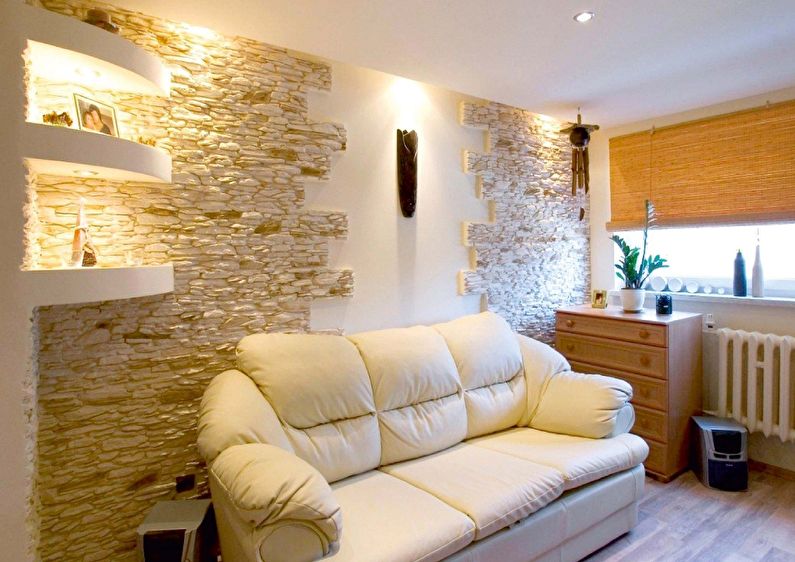
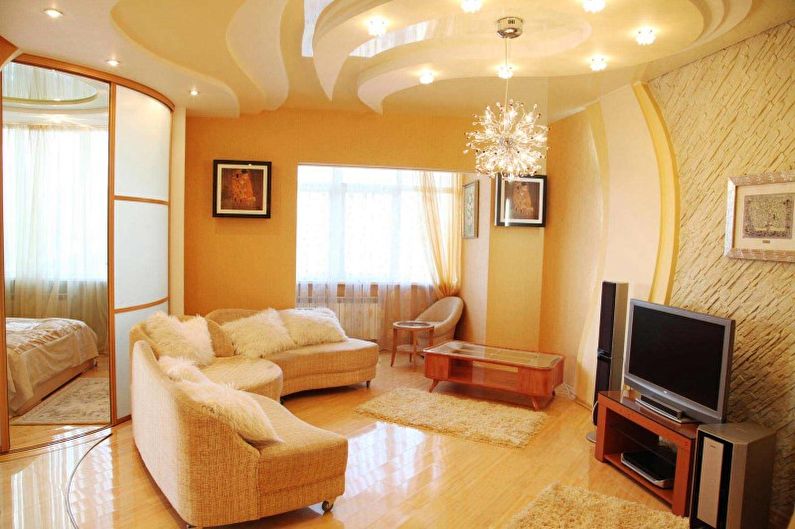

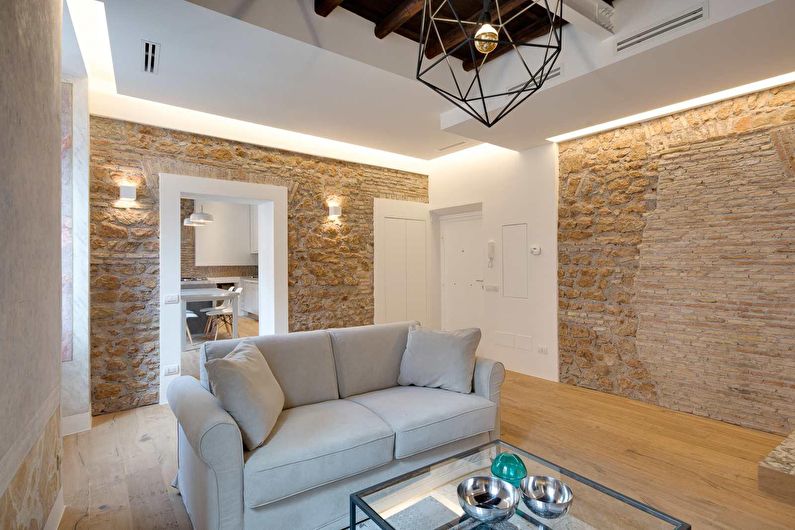
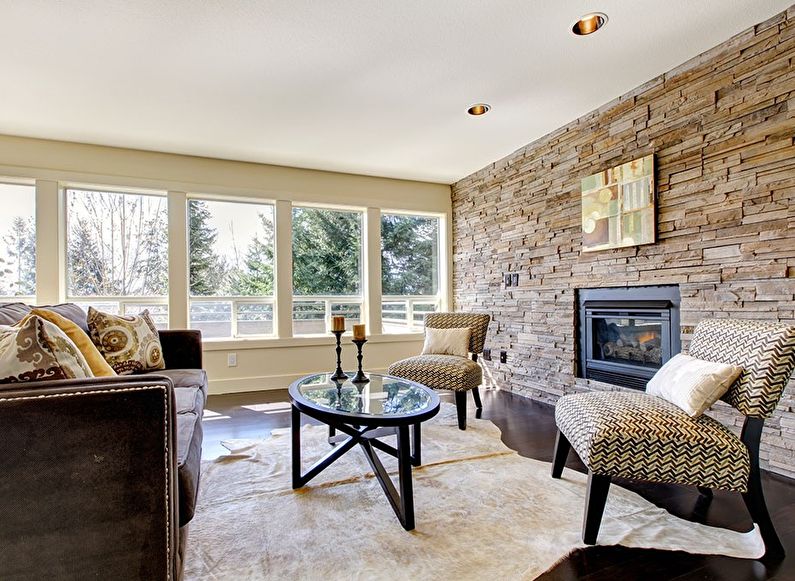
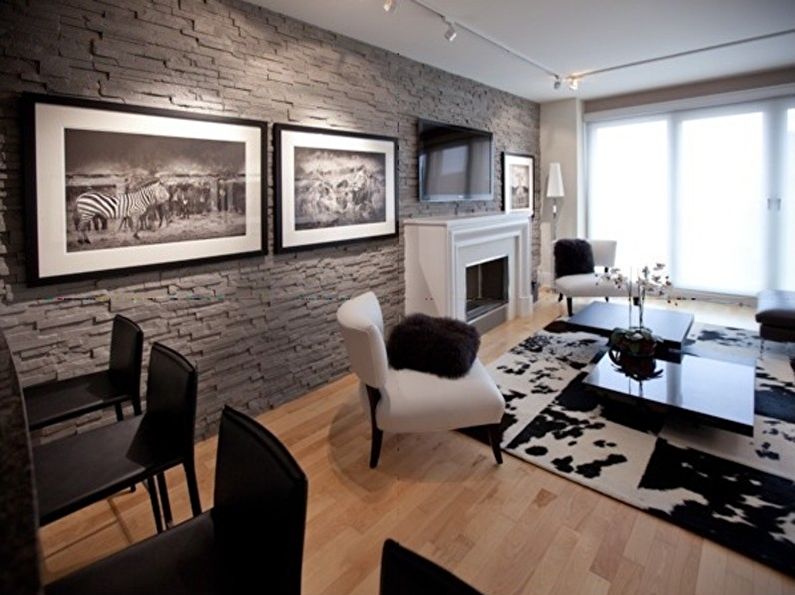



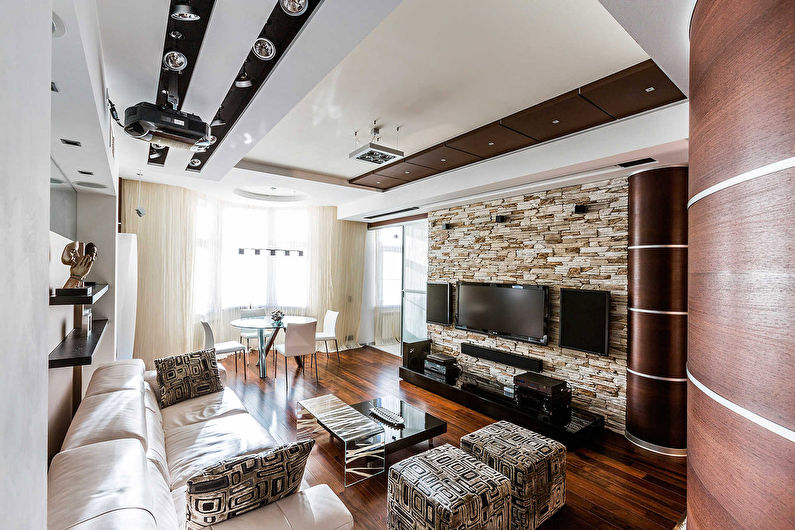
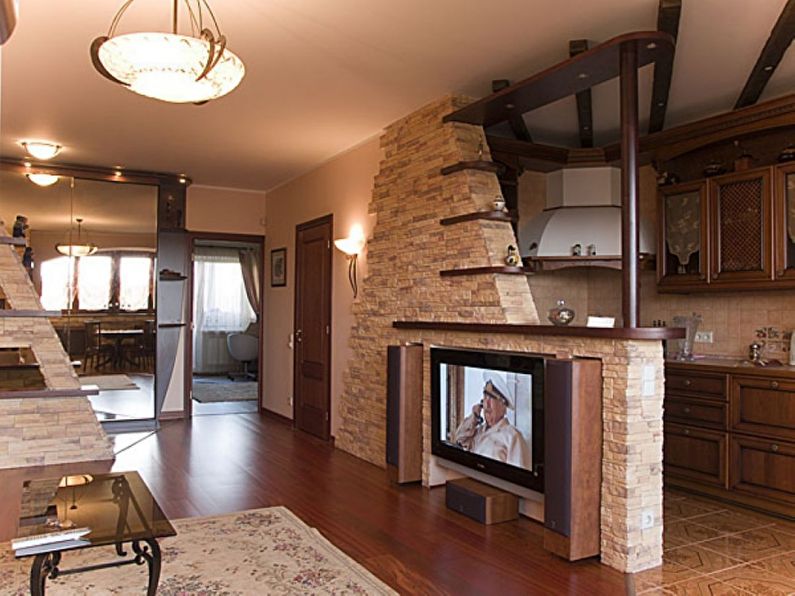

Decorative stone in the kitchen interior
The kitchen is the place where stone cladding looks the most natural. Firstly, it reminds us of real hearths and stoves, where cooking and baking bread have been traditionally done. Secondly, it’s the most fire-resistant finishing option.
Countertops made of artificial stone have gained universal love thanks to their perfectly smooth surface, where there are no marks left from knives or hot dishes. Moreover, they are very aesthetic – the unique pattern of polished stone creates an impression of luxury. The same advantages apply to polymer sinks, window sills, and bar counters.
In general, when choosing decorative stone for the kitchen, it’s advisable to opt for products with high density, covered with glaze or lacquer, as porous products can accumulate moisture, dirt, and odors. Tiles that will be used for cladding the backsplash should be non-marking, easy to clean, and not melt when heated.
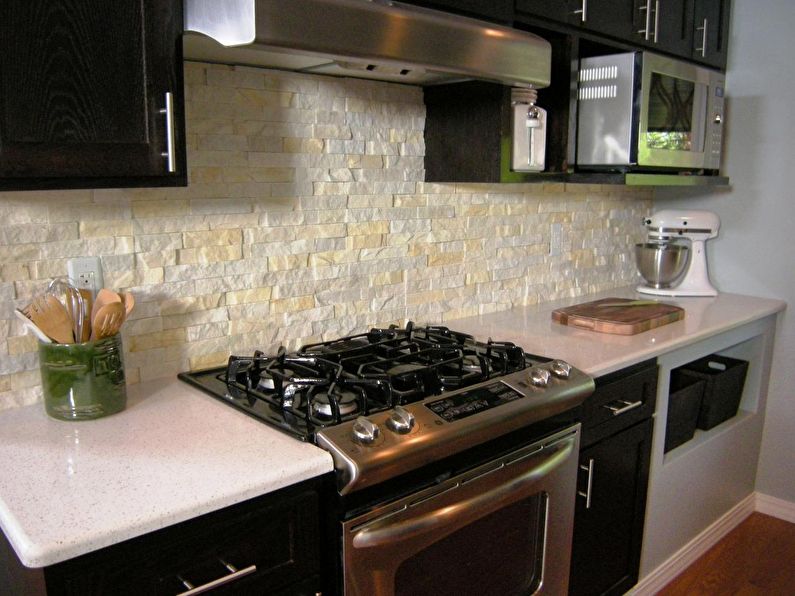
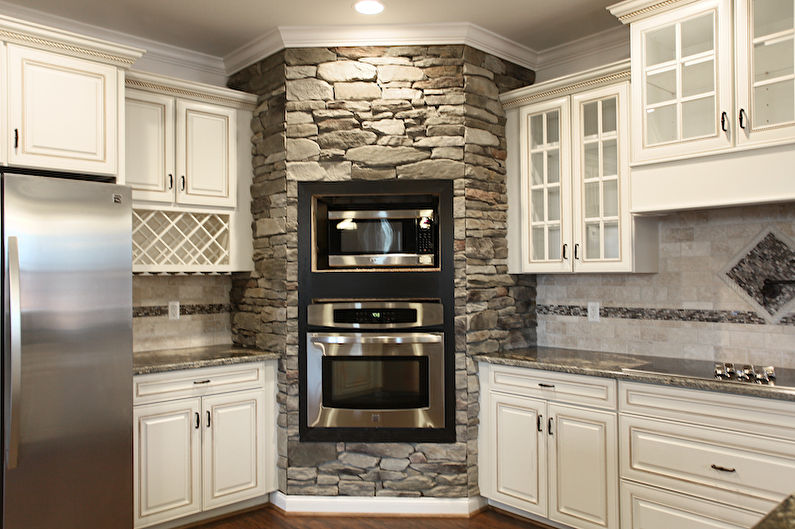
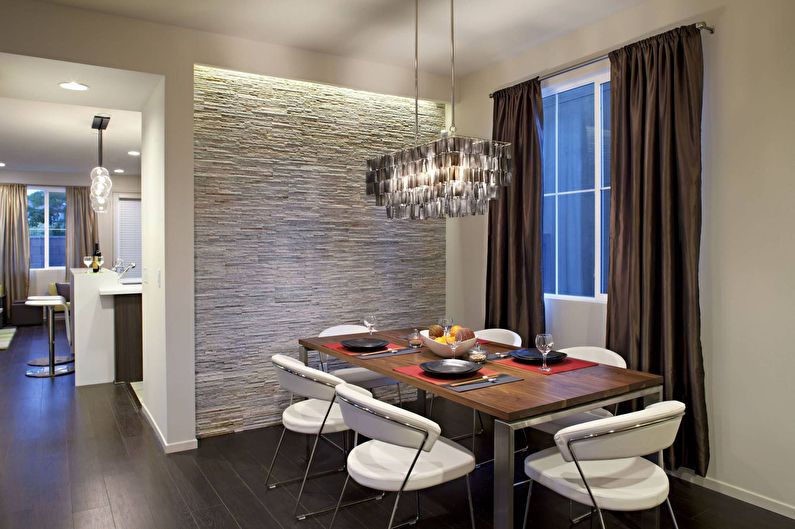

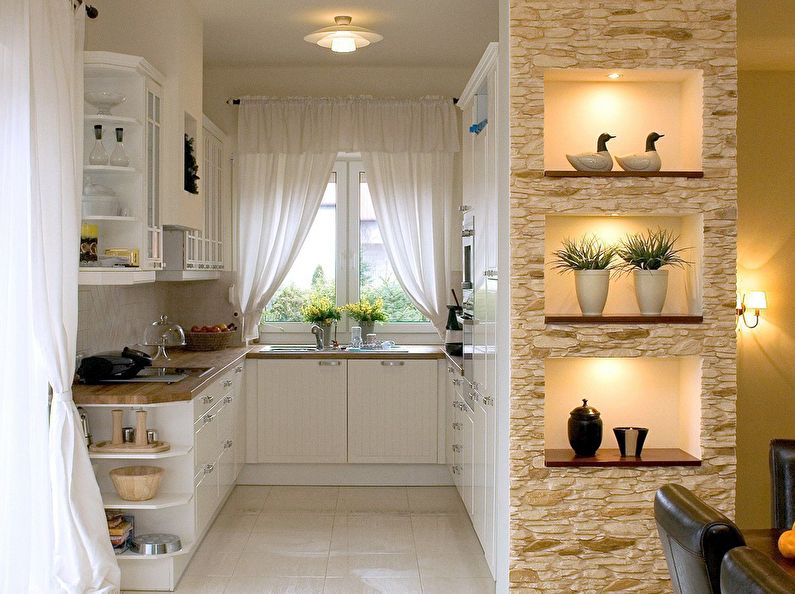

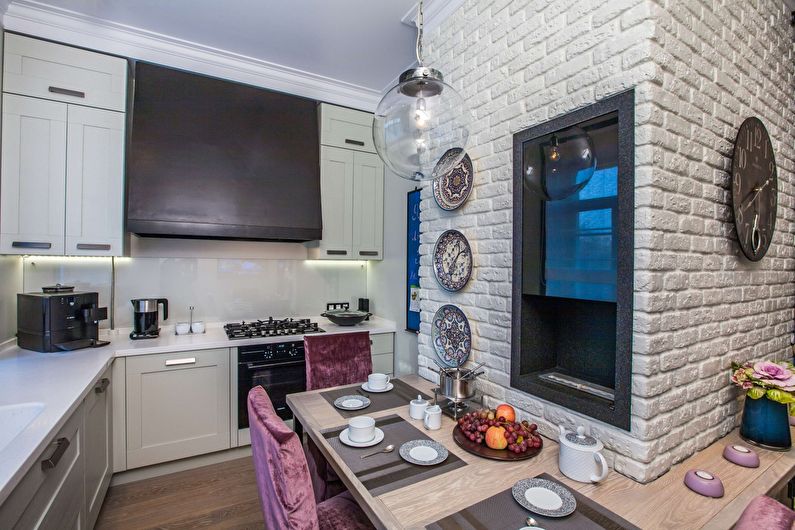
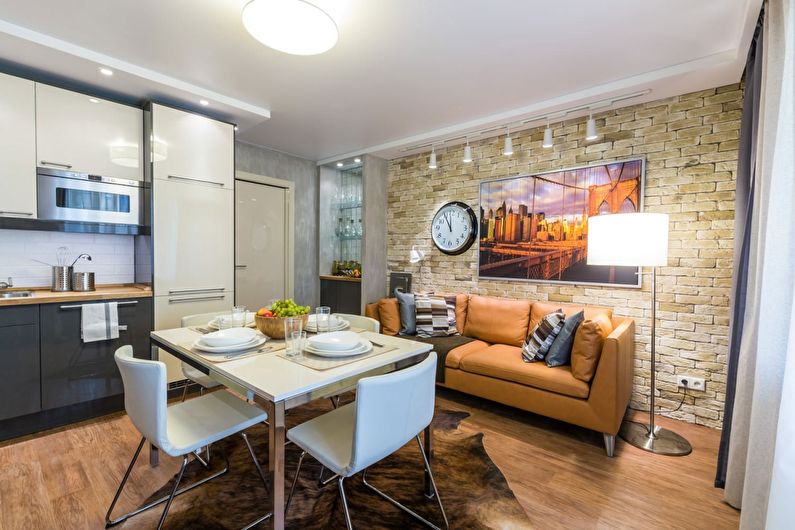
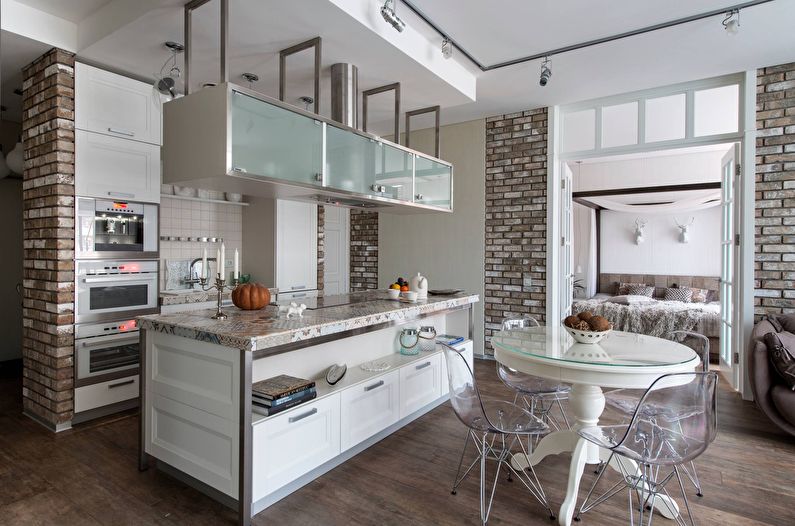
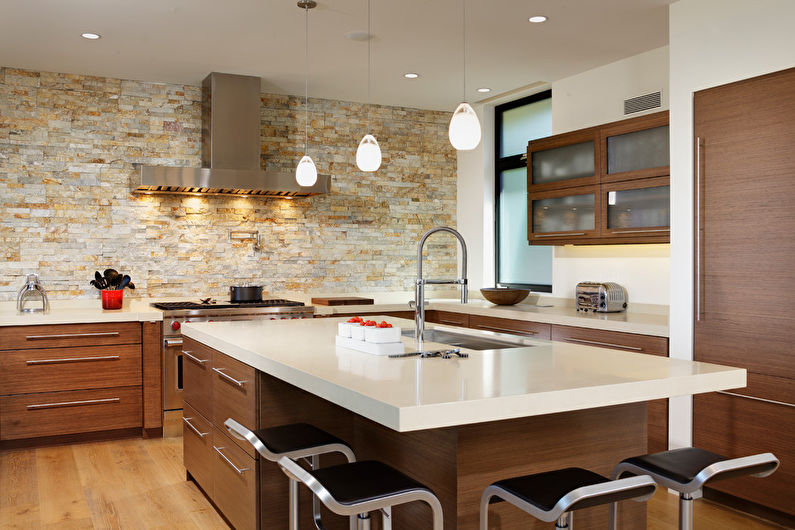
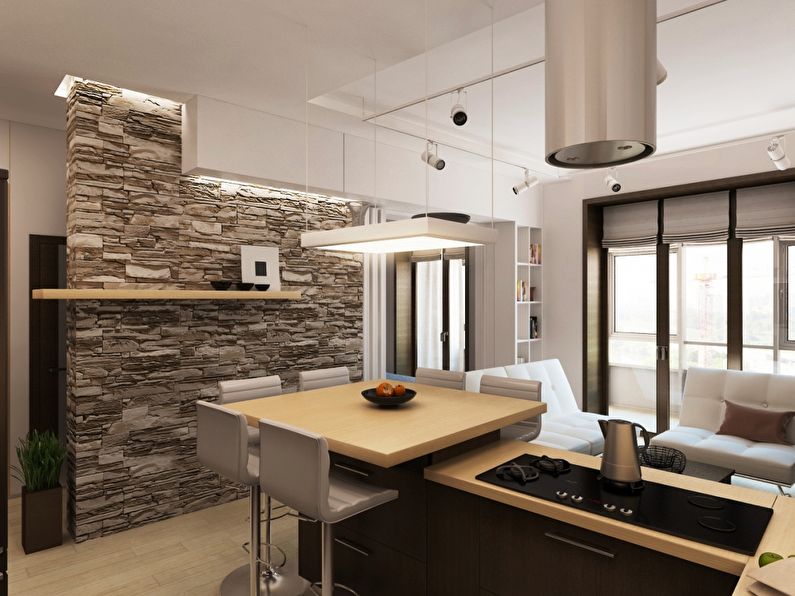

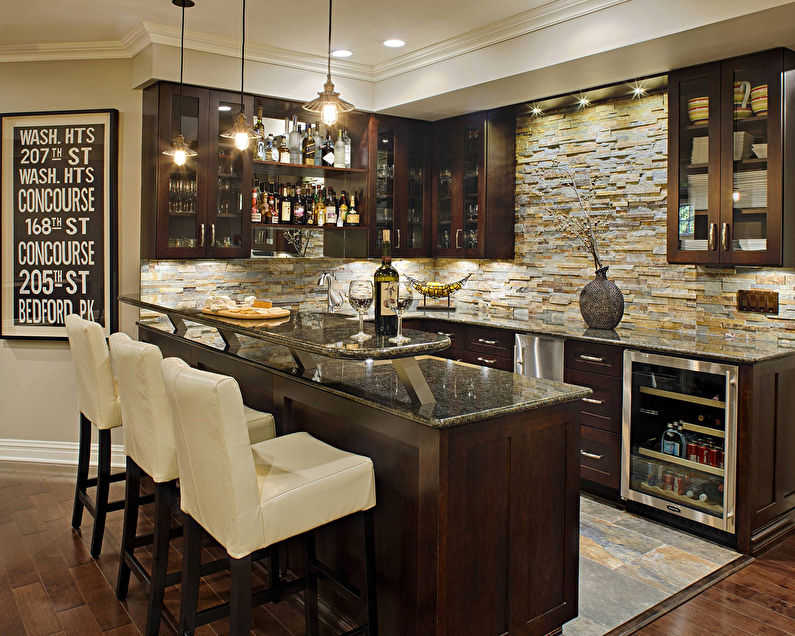
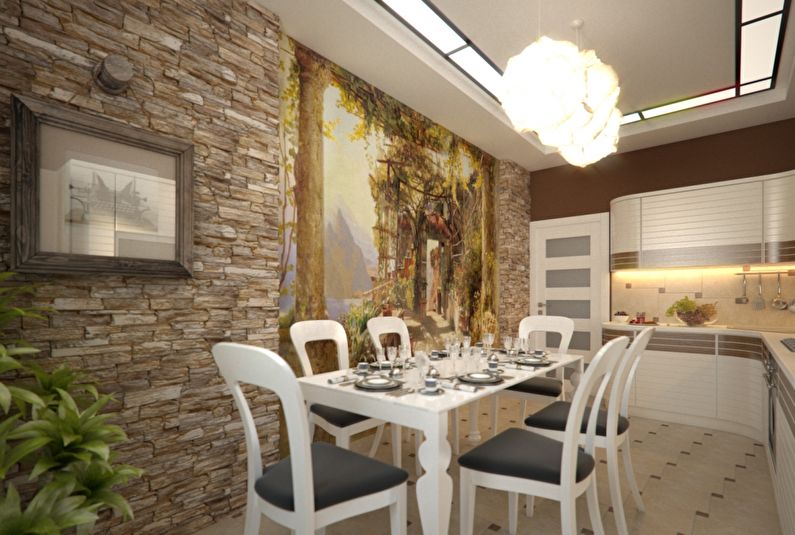
Decorative stone in the bedroom interior
Combined with other natural finishes, stone cladding will help create a relaxed atmosphere of a country house or a spacious loft in the bedroom. If you choose a natural color scheme and a textured surface, it will fit well into a Mediterranean, rustic, or ethnic interior. Beams on the ceiling, rough wooden furniture, linen textiles, as well as fluffy rugs on the floor will complement the look.
In the bedroom, you should steer clear of glossy stone imitations. They can come across as a bit cold and may stir up anxious feelings. You should light up the parts of the walls with stone cladding to keep the room from becoming a gloomy tomb.
Lamps designed in the style of antique metal lanterns, torches, or kerosene lamps can create an especially impressive effect.
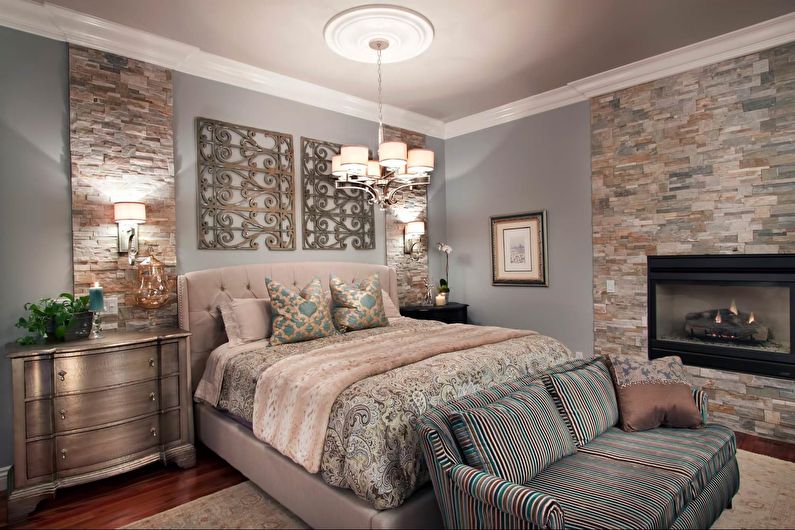

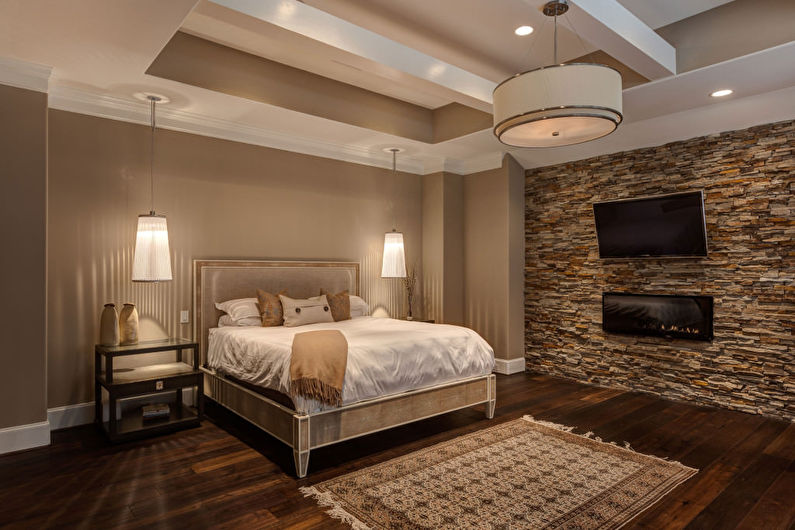


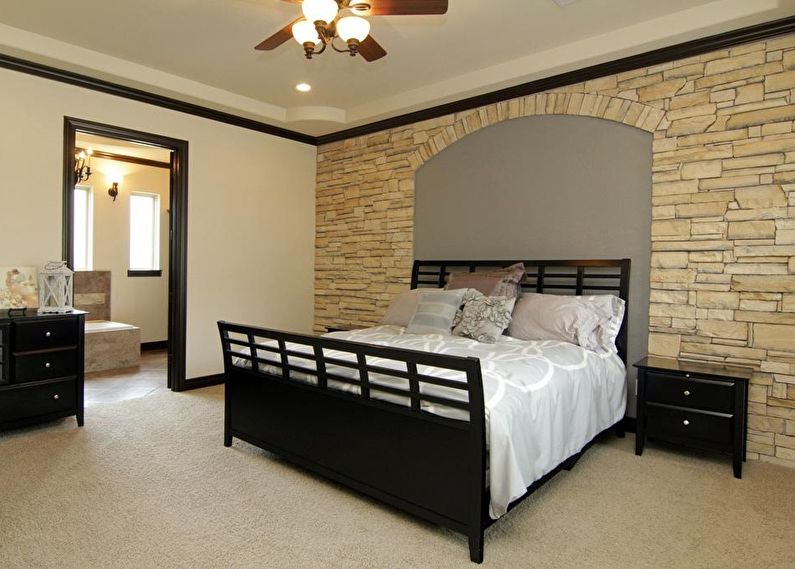
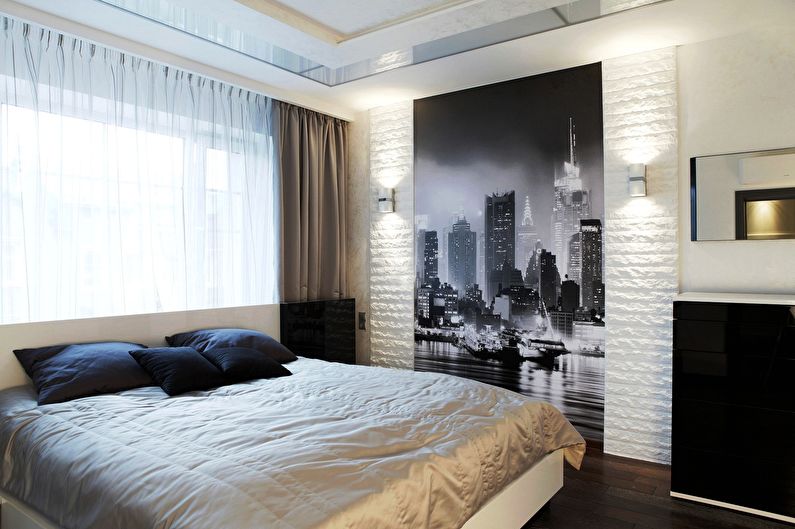
Decorative stone in the interior of a children’s room
Stone can effortlessly transform ordinary walls into a fairy-tale castle tower, a mysterious cave, a salt dungeon, or an underwater kingdom.
If you face the edges of photo wallpapers with a landscape with stone, you can achieve an interesting effect. In a children’s room decor, you can use pebble imitation to create beautiful mosaics and panels, frames for pictures or mirrors, or paint them as bugs and snails.
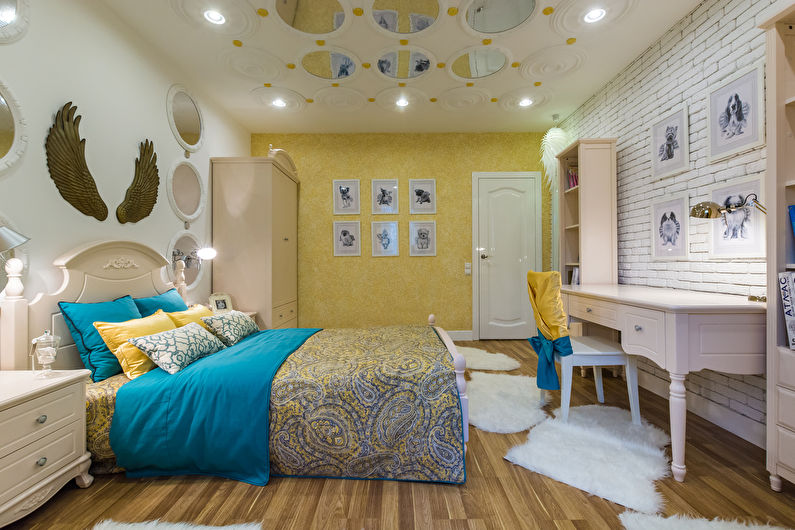
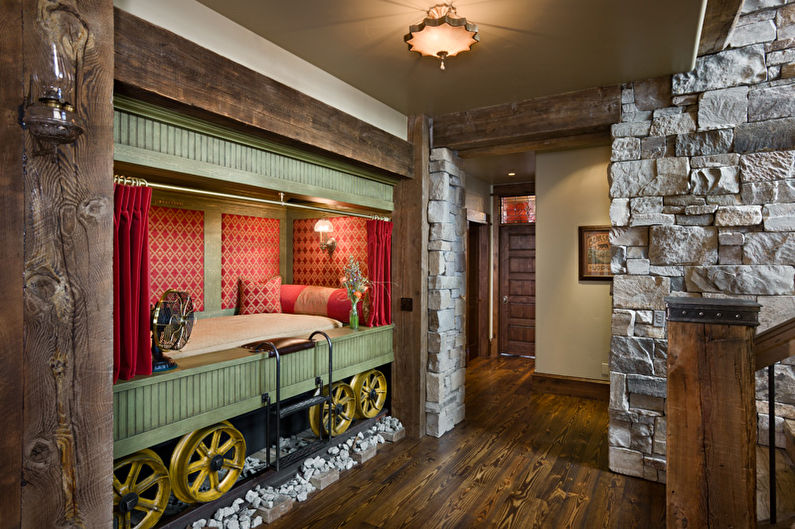

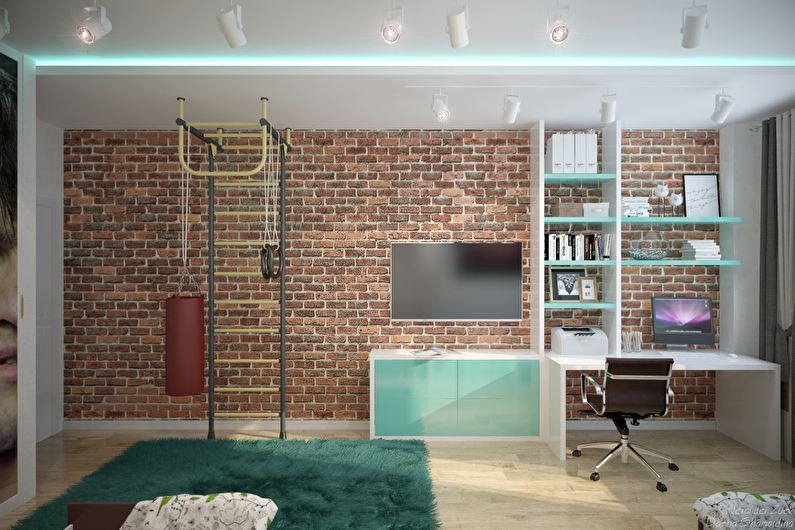
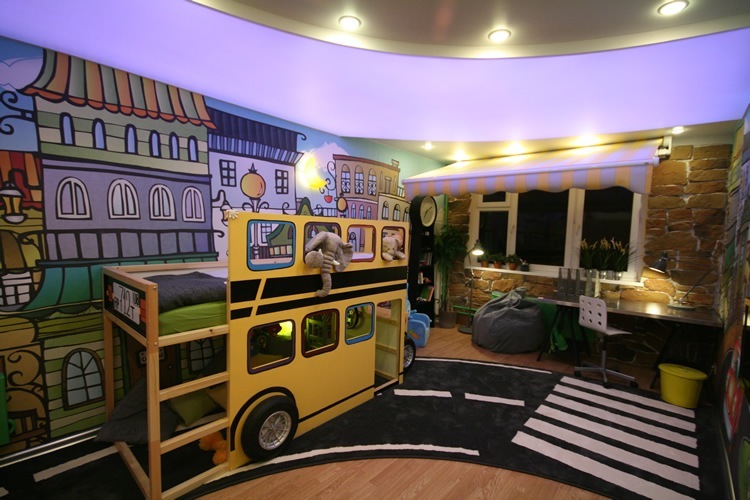
Decorative stone in the interior of the hallway and corridor
Decorative stone in the hallway is reminiscent of the cozy streets of old European cities. It immediately shows the good taste of the homeowners.
The stone can decorate the walls entirely or individual fragments, but in any case, it will be an elegant decoration. To emphasize the beauty of the stone finish in the corridor, wrought iron-framed mirrors, “street” lamps, and benches, as well as large clocks with Roman numerals, like on town halls, can be used.

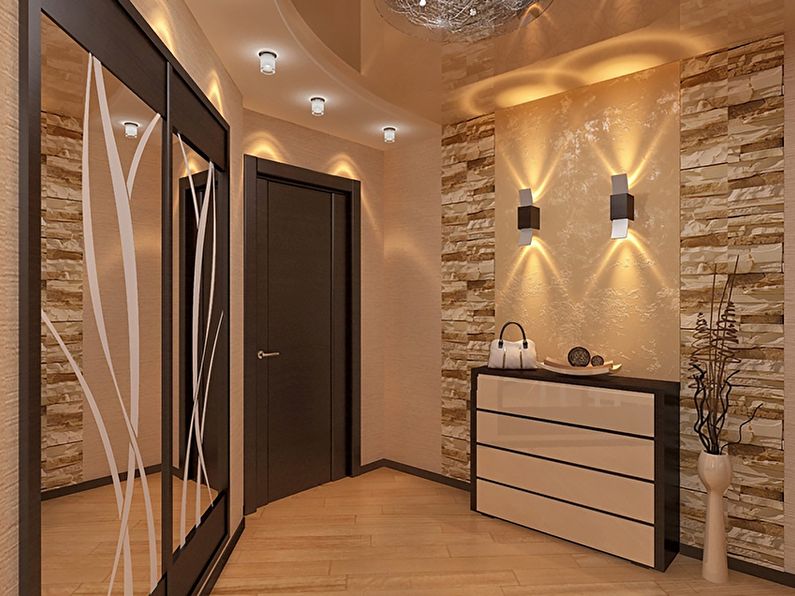

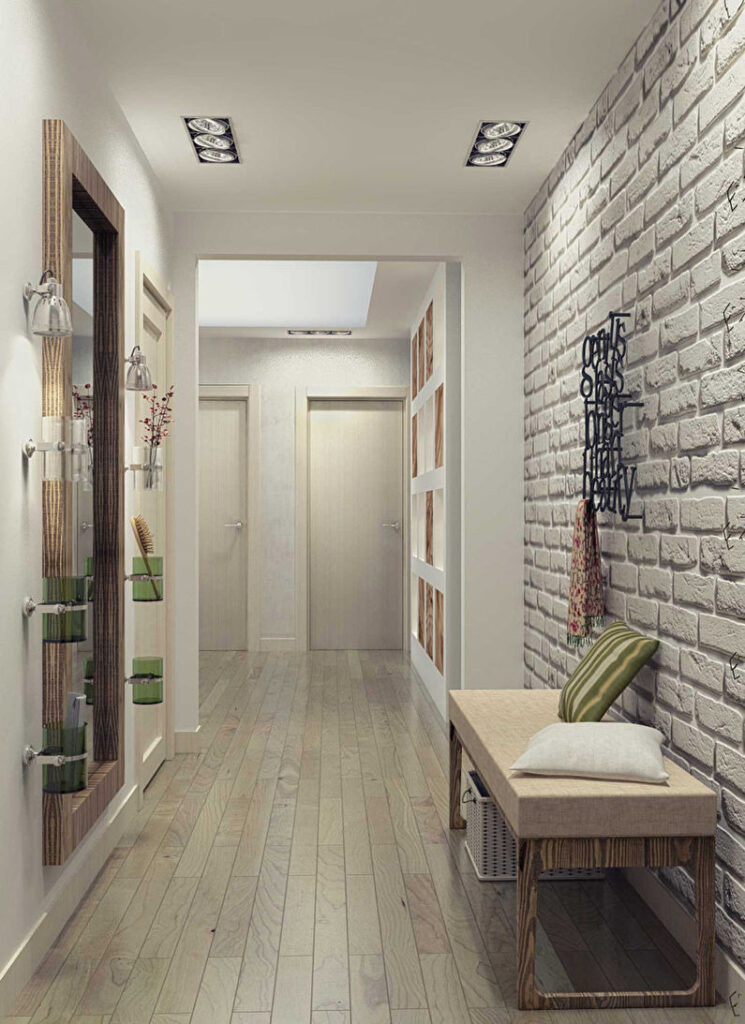


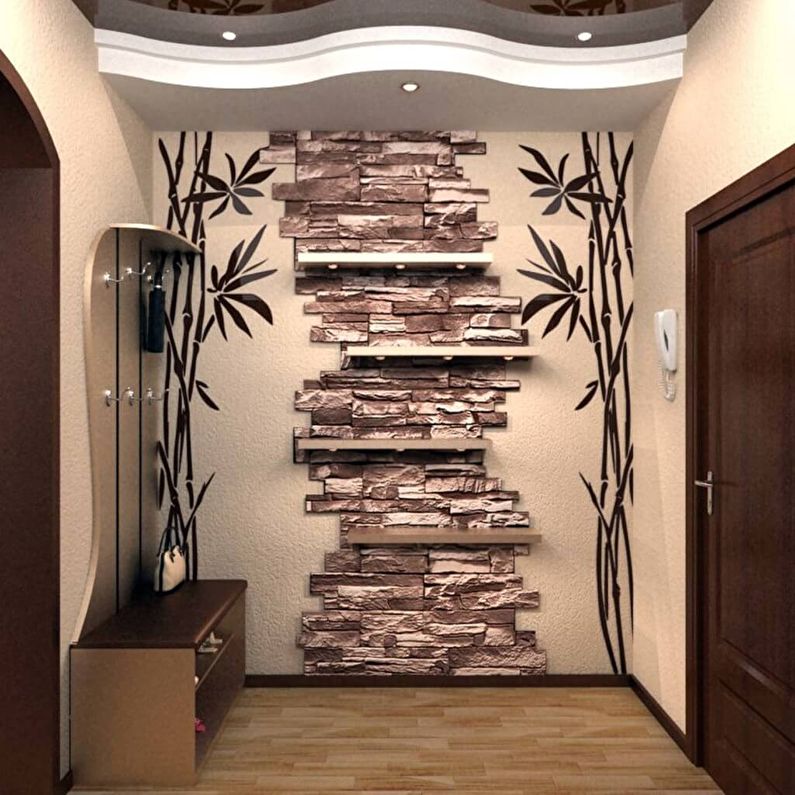
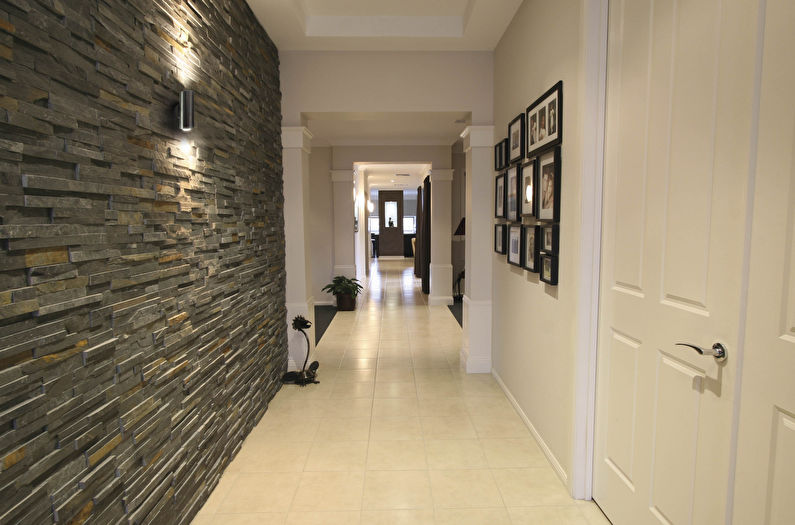
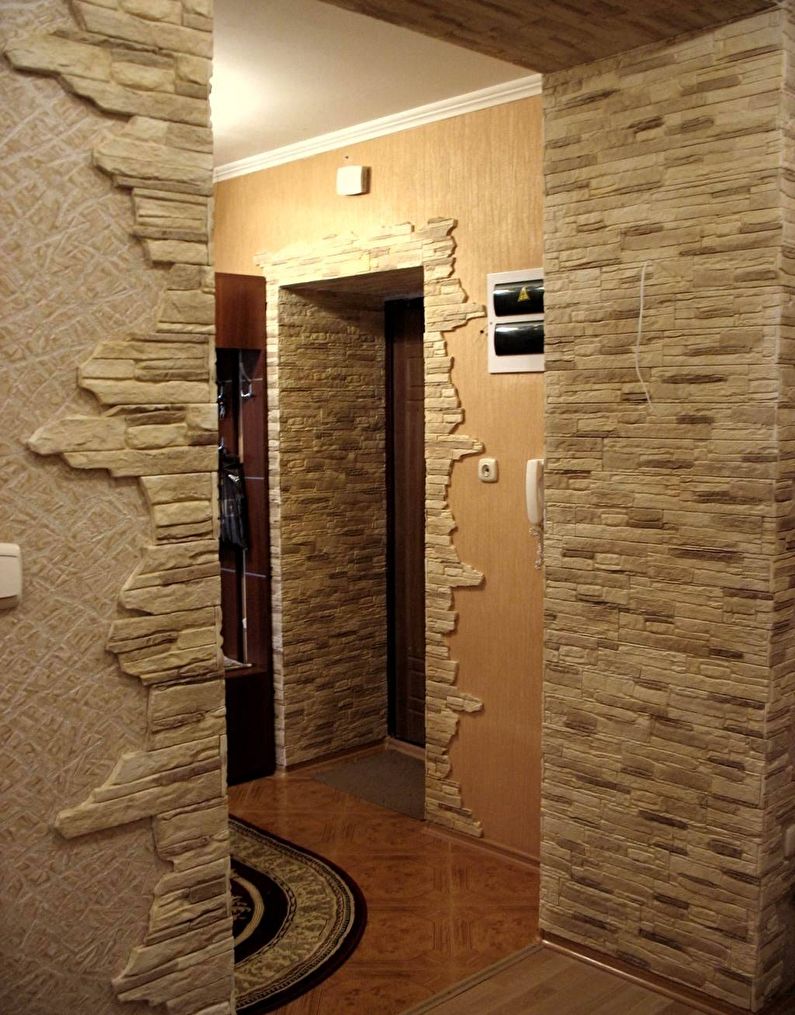
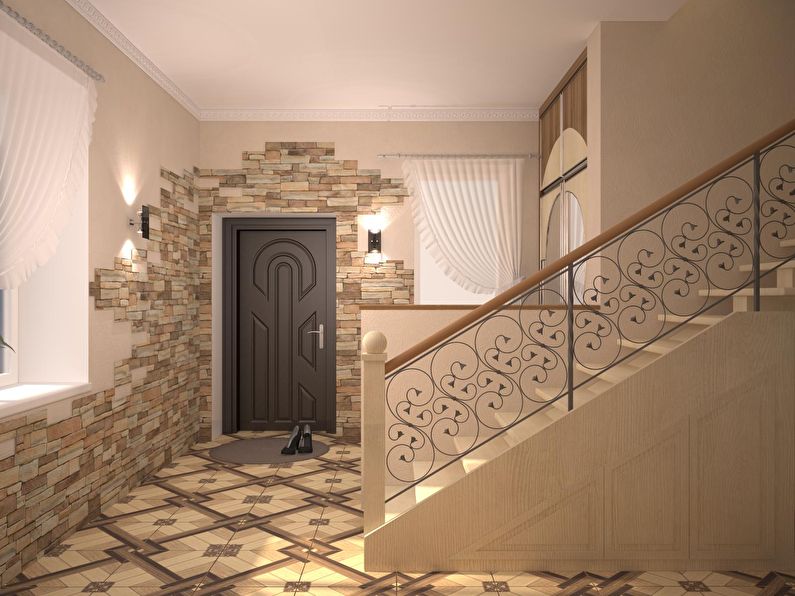
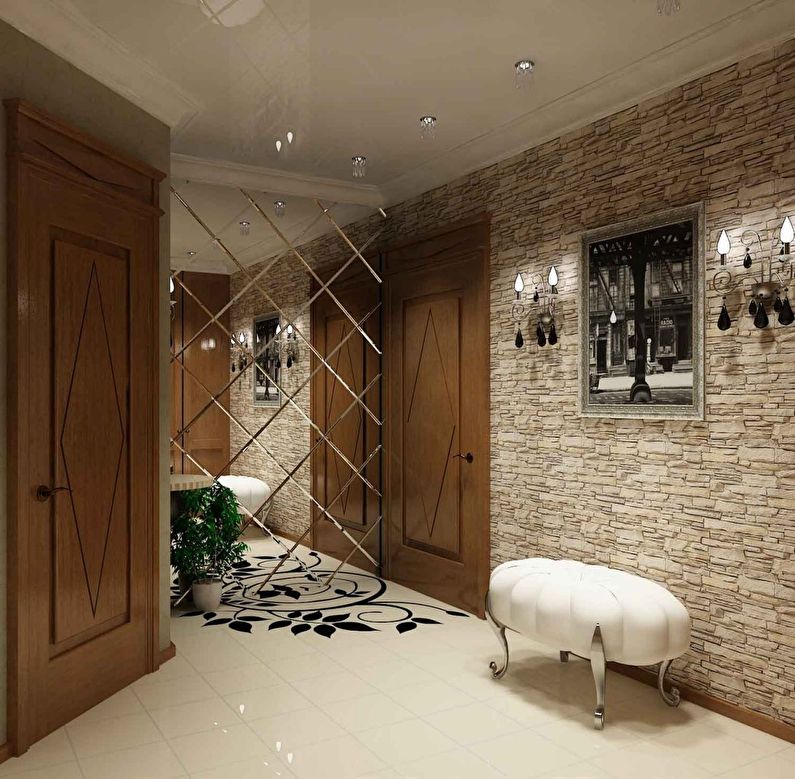
Decorative Stone in the Interior of a Balcony
Decorating walls with decorative stone is a great choice for an insulated balcony or loggia and will give the interior a rich look. These small areas can be made into a cozy spot for tea, reading books, organizing a work area, or a mini greenhouse.
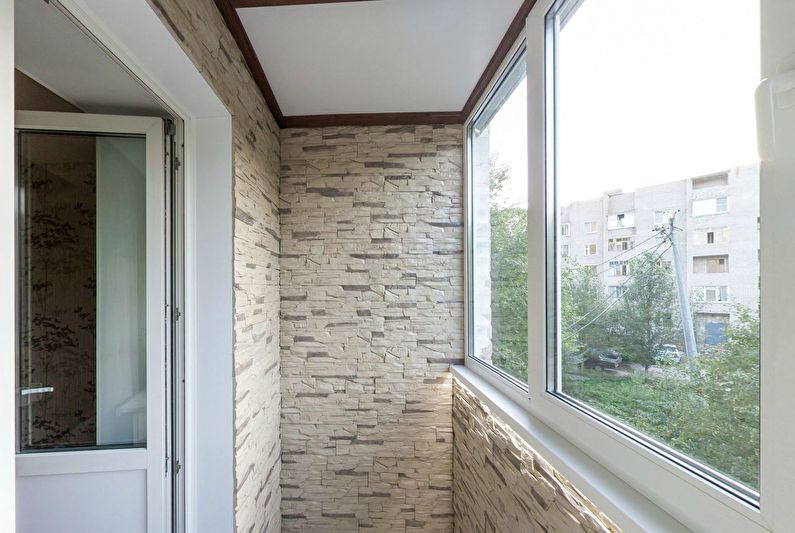
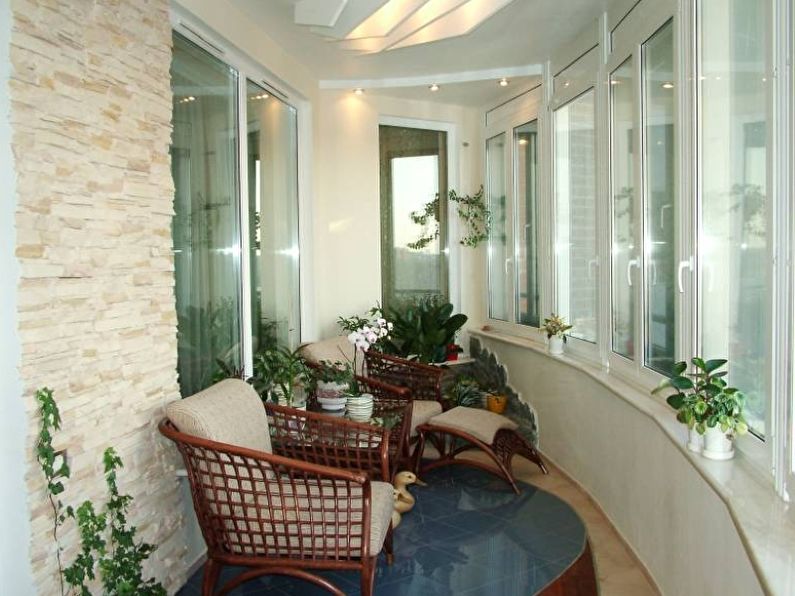


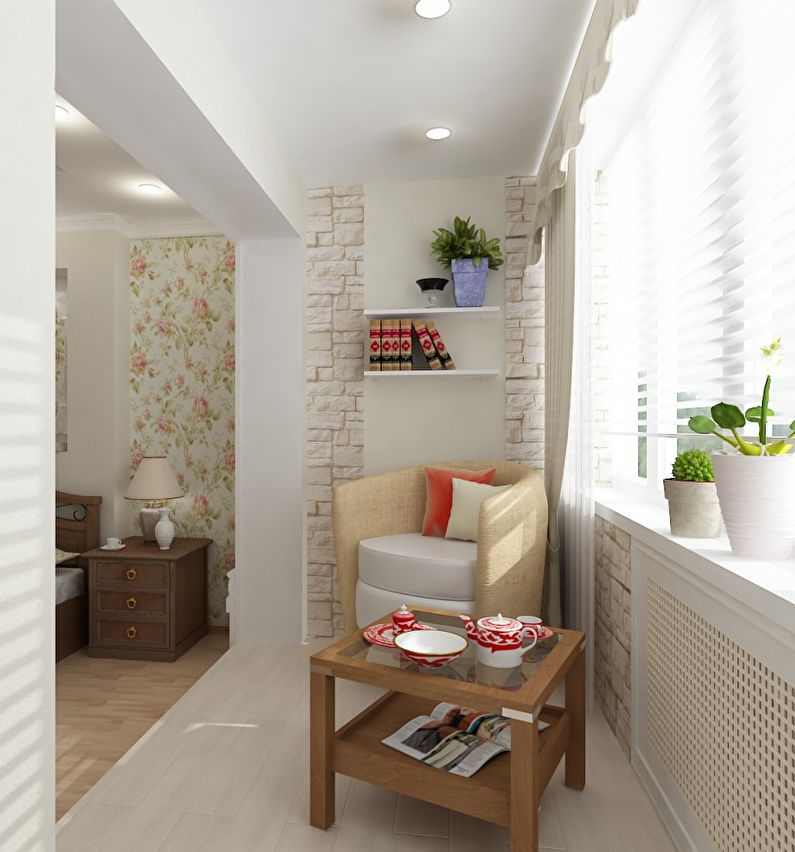
Decorative Stone in the Interior of a Bathroom
Due to the high humidity in the bathroom, it’s best to use only those types of decorative stone that don’t have a porous texture and, therefore, don’t absorb moisture.
For the bathroom, glazed stone tiles, porcelain tiles, acrylic and polyester products are ideal. By the way, the latter are used not only as a material for covering floors or walls – from these same polymer resins, bathtubs and sinks are made.
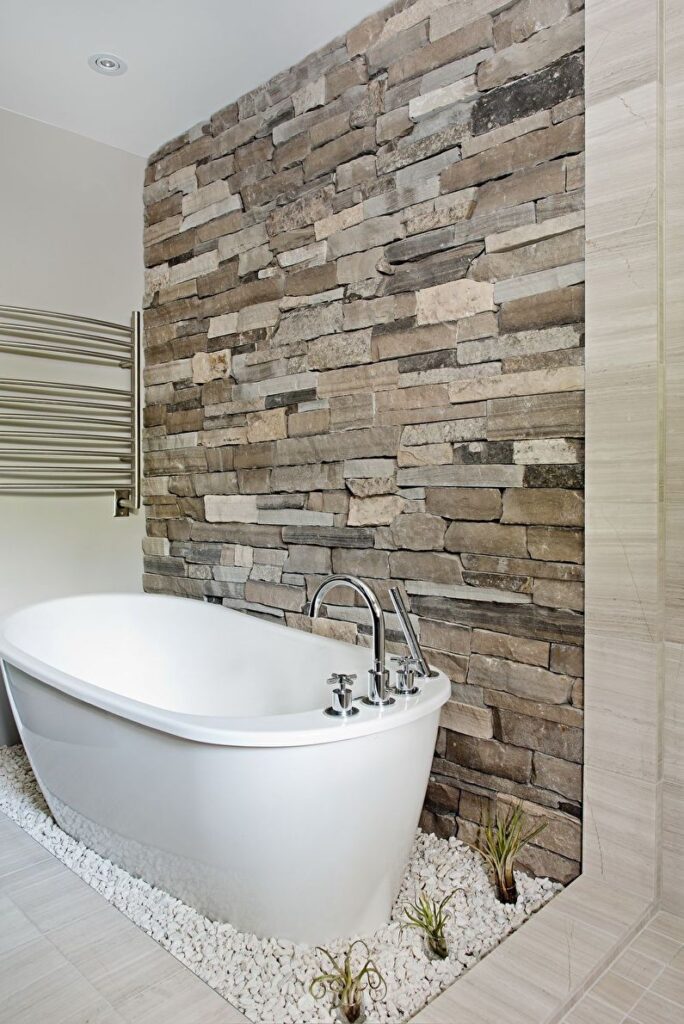

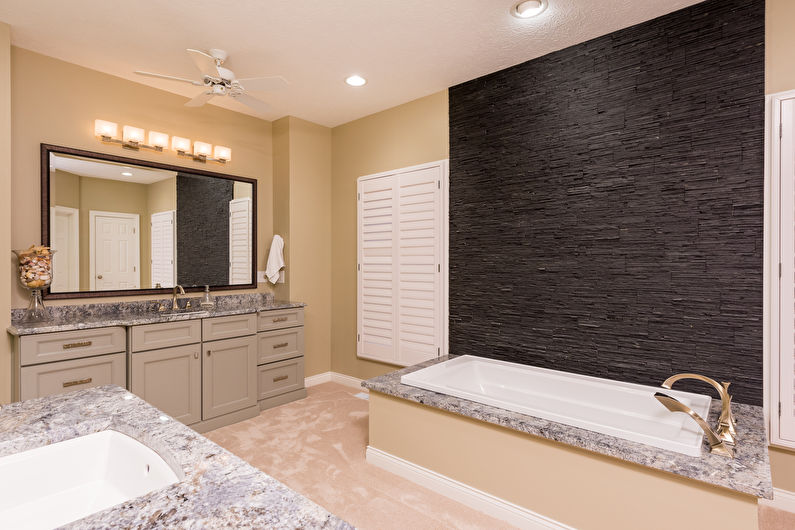


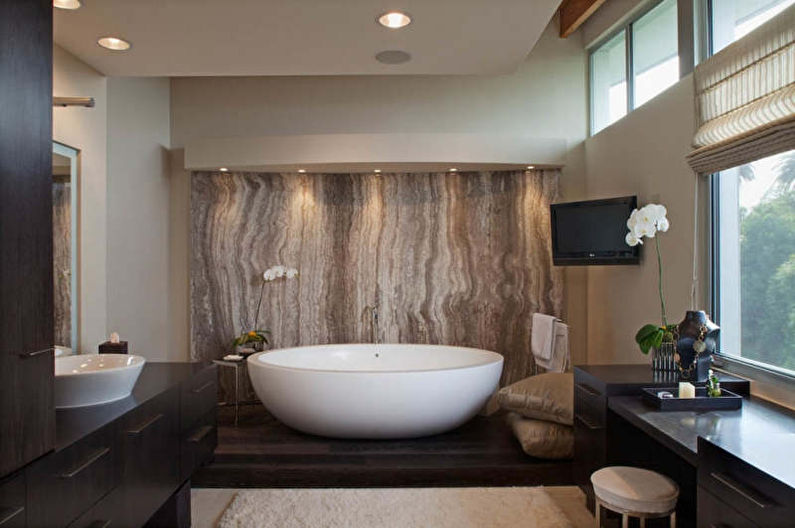
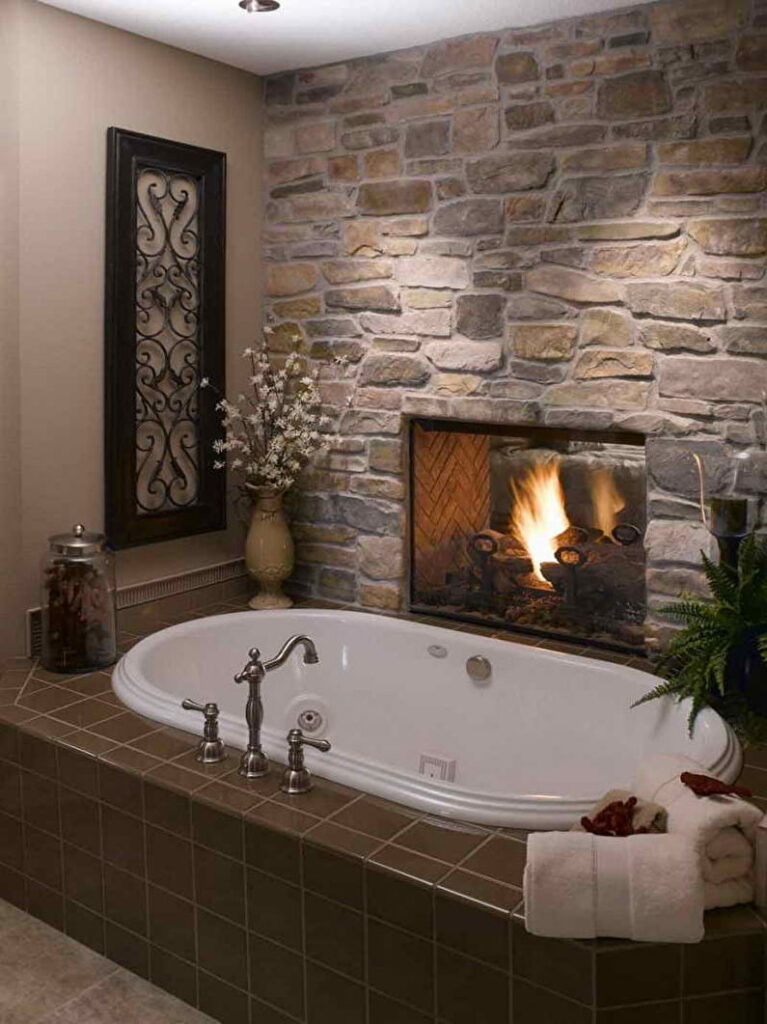
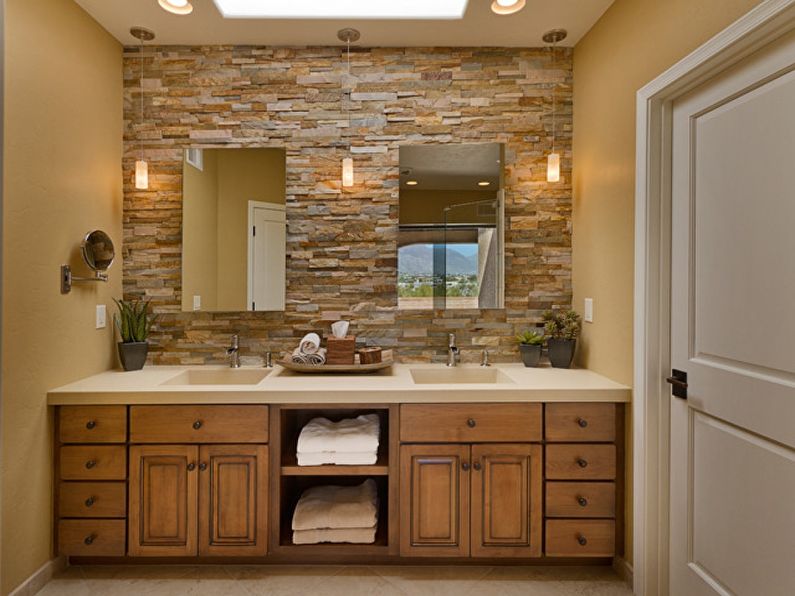

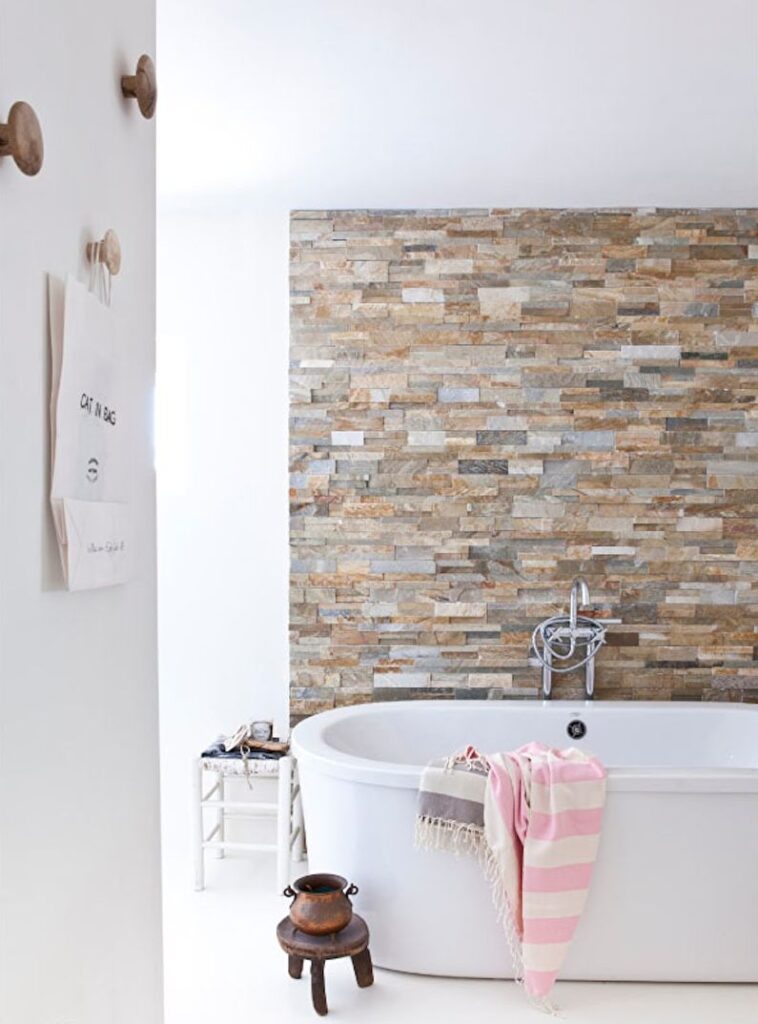
Photo Gallery – More Ideas
In the photo collection below, you’ll see more ways to use decorative stone in interior design. The gallery of images includes the most interesting design solutions for finishing stairs, niches, and arches.


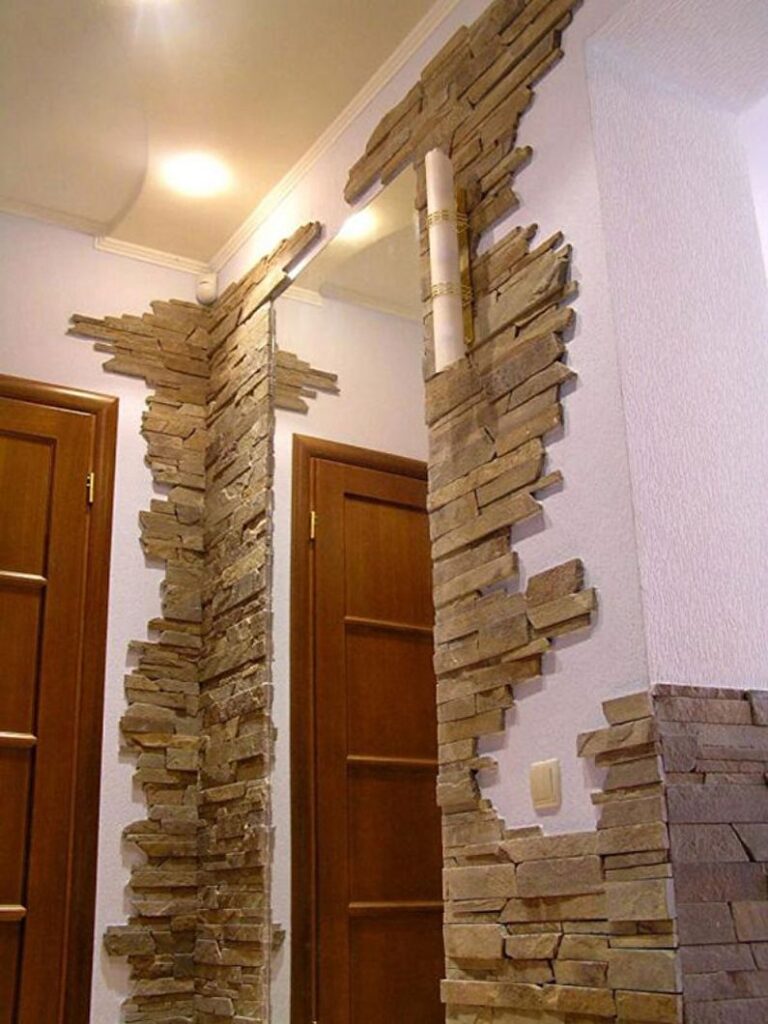

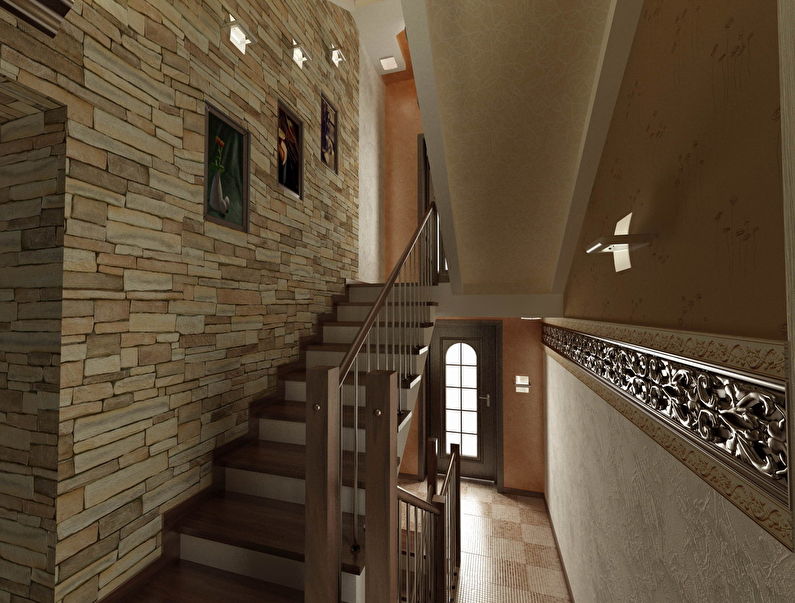
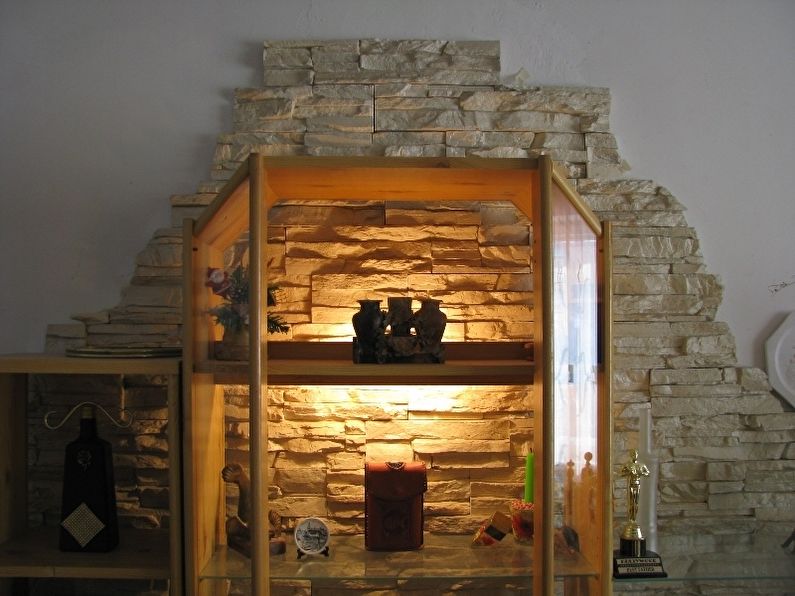

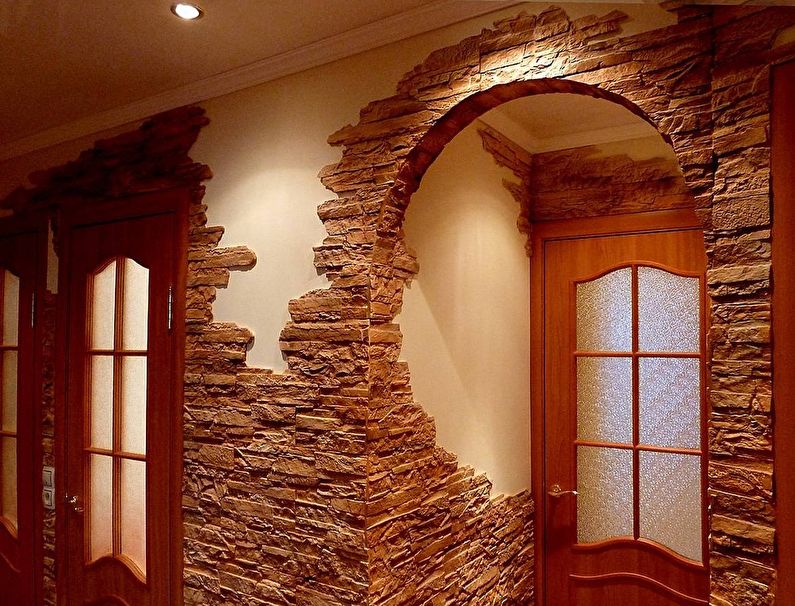
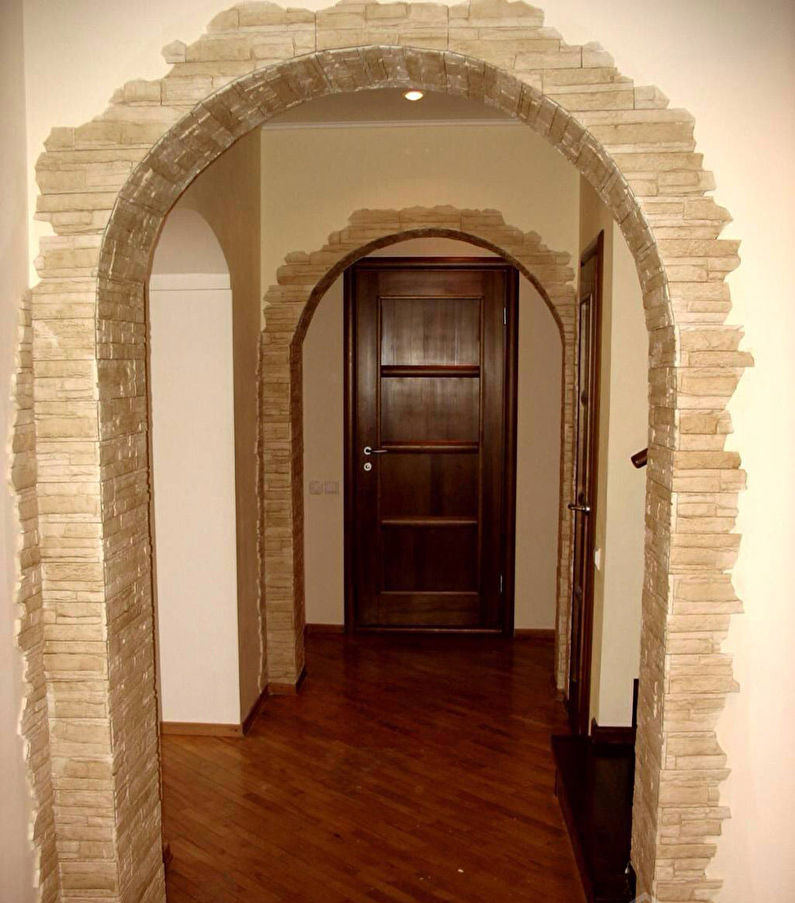

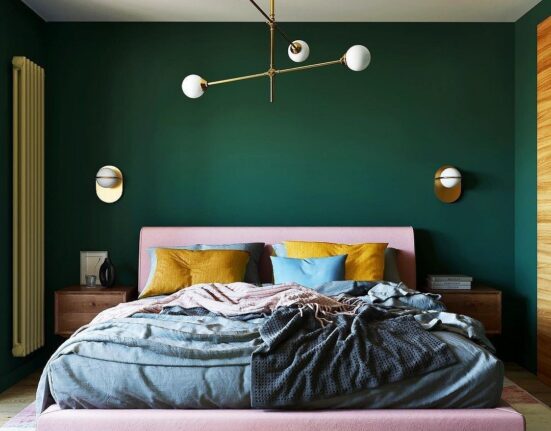

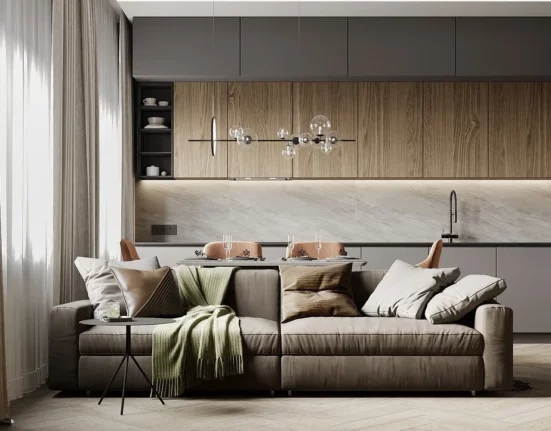
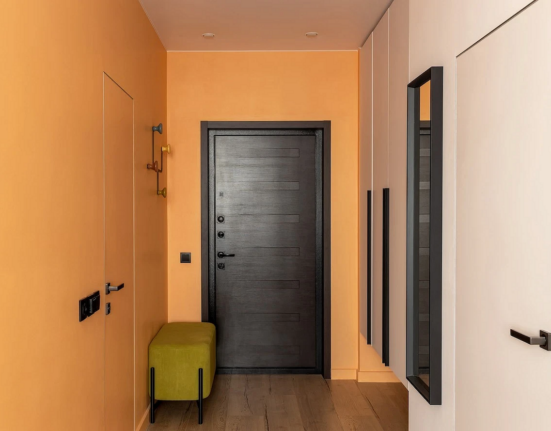

Leave feedback about this